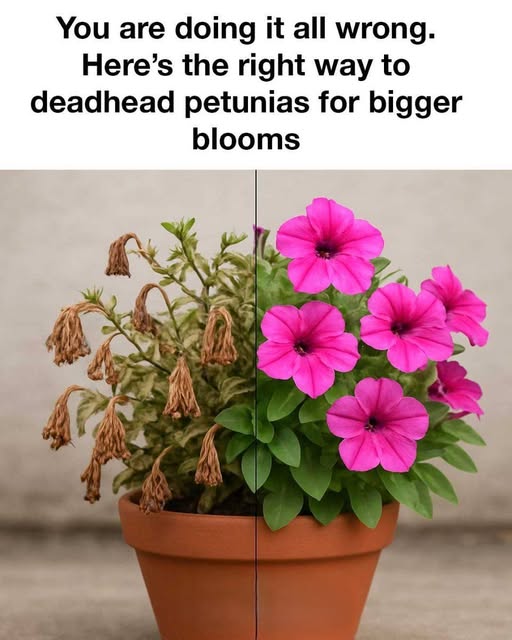You are doing it all wrong. Here’s the right way to deadhead petunias for bigger blooms
Petunias are a favorite among gardeners for their vibrant colors and ability to bloom throughout the summer. However, to keep them looking their best and to encourage continuous blooming, deadheading is a crucial practice. Many gardeners may not realize that improper deadheading can actually hinder the growth and blooming potential of these beautiful flowers.
In this article, we will explore the correct way to deadhead petunias to ensure you get the most out of your plants. From understanding the importance of deadheading to learning the right techniques and timing, we will cover everything you need to know to achieve bigger and more frequent blooms.
1. Understanding the Importance of Deadheading
Deadheading is the process of removing spent flowers from a plant. For petunias, this practice is essential because it prevents the plant from going to seed. When a petunia flower dies, it begins to form seeds, which signals the plant to stop producing new blooms. By removing these spent flowers, you encourage the plant to focus its energy on producing more blooms instead of seeds.
In addition to promoting more blooms, deadheading also helps maintain the plant’s overall health and appearance. Removing dead flowers prevents the plant from wasting energy and resources on seed production, allowing it to channel those resources into new growth and bloom production.
2. Common Mistakes in Deadheading Petunias
One common mistake gardeners make is simply pinching off the flower head without removing the seed pod. This does not prevent the plant from going to seed and can result in fewer blooms. Another mistake is using dull or dirty tools, which can damage the plant and introduce diseases.
Some gardeners also wait too long between deadheading sessions, allowing seed pods to form and reducing the plant’s blooming potential. It’s important to deadhead regularly, ideally every few days, to keep your petunias in top shape.
3. The Right Tools for the Job
To properly deadhead petunias, you’ll need a pair of sharp, clean scissors or pruning shears. Sharp tools make clean cuts, which help prevent damage to the plant and reduce the risk of disease. It’s also a good idea to have a small bucket or container on hand to collect the spent flowers and seed pods as you work.
For those who prefer a more hands-on approach, you can also use your fingers to pinch off the flowers. However, be careful to remove the entire flower and seed pod to ensure effective deadheading.
4. Timing: When to Deadhead for Optimal Results
The best time to deadhead petunias is in the early morning or late afternoon when the sun is not too intense. This reduces stress on the plant and helps prevent wilting. It’s important to deadhead regularly, ideally every few days, to keep the plant from going to seed.
During peak blooming season, you may need to deadhead more frequently to keep up with the plant’s growth. Pay attention to the weather and adjust your deadheading schedule accordingly, as hot, dry conditions can cause flowers to fade more quickly.
5. Step-by-Step Guide to Properly Deadhead Petunias
CONTINUE READING ON THE NEXT PAGE

